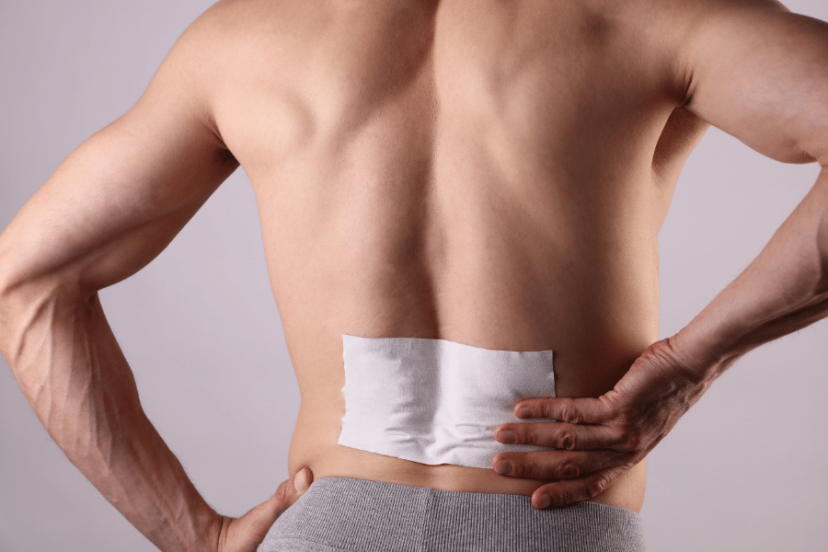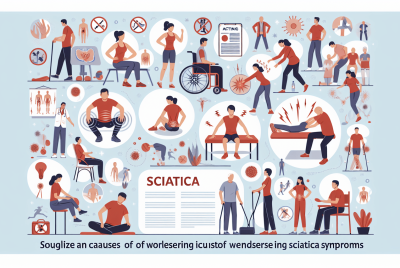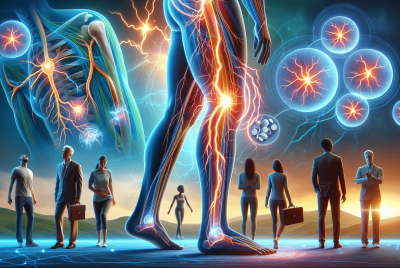Back Pain Patches 2023: Are They Safe & Effective?
Hi there! As someone who has spent a considerable amount of time researching and advising on various health and wellness solutions, I’d love to share what I’ve learned about back pain patches. You see, millions of people around the world experience back pain, and it can be incredibly debilitating. But are back pain patches safe and effective? Let’s find out together.
Causes of Back Pain
Its important to first understand the cause or trigger of your own particular back pain before you set about seeking treatment or pain relief. This way, treatments & relief can be targeted & if necessary, further assessment & diagnosis can be sought. Back pain can stem from various sources, such as muscular strain, nerve irritation, spinal disc damage, and diseases like arthritis. Sometimes, the cause can be as simple as poor posture or as complicated as a genetic condition.
It’s important to always take a holistic approach when assessing causes & seeking solutions. I say this because I can speak form experience in that a combination of therapies or practices can make all the difference. Don’t under estimate things such as diet & exercise as these can contribute significantly towards managing & reducing pain & discomfort. Equally, things we take for granted & wouldn’t consider being a problem may well be & they can be in the form of improper mattress or pillow causing less than ideal conditions for good posture & rest.
Impacts of Chronic Back Pain
Chronic back pain can significantly affect one’s quality of life, making everyday tasks feel like insurmountable challenges. It’s more than physical—it’s a psychological battle, too. I completely understand how anyone would want to alleviate pain & discomfort, especially back pain. Be sure to read on; I want to give you the best information & can here to help you find relief in the safest & most effective ways.
What are Back Pain Patches?
These patches are usually medicated & adhesive designed to relieve back pain. They come in various types, each with their unique properties and uses. Then there are heating & cooling type patches, usually non-medicated.
Types of Back Pain Patches
Primarily, there are two main medicated types: patches with nonsteroidal anti-inflammatory drugs (NSAIDs) and patches with lidocaine. NSAID patches reduce inflammation and pain, while lidocaine patches numb the painful areas
Heating and Cooling Patches: An Alternative Solution
Another alternative that I’d love to bring into our discussion is the use of heating and cooling patches. Thes can provide a non-medicated method for dealing with back pain. Heating patches work by relaxing the muscles and improving blood flow, which can ease the pain and help promote healing. They’re particularly beneficial for those experiencing stiffness or chronic muscle tension. Conversely, cooling patches deliver a sensation of cold to the skin, which can help numb the pain and reduce inflammation. They’re often the go-to choice for acute injuries or intense pain flares. It’s essential to remember that while these patches can provide temporary relief, they don’t address the root cause of back pain. As always, it’s advisable to discuss any new treatment, even non-medicated ones, with a healthcare professional to ensure it’s suitable for your specific needs.
How Back Pain Patches Work
Essentially the active ingredients in these patches get absorbed through the skin and work in the affected area to provide pain relief. Pretty simple really.
Evaluating the Safety and Effectiveness of Back Pain Patches
Advantages of Back Pain Patches
Back pain patches offer targeted relief, are easy to use, and provide prolonged pain relief. And, unlike oral medication, they minimize systemic side effects.
Potential Side Effects
Just like any other medication, these patches can cause side effects like skin irritation, redness, and itching. In rare cases, users might experience more severe symptoms, like blistering or changes in heart rhythm.
Assessing Associated Health Risks
Allergic Reactions
Some individuals may have allergic reactions to the adhesive or the medication in the patch. Symptoms can range from mild itching to severe rash.
Medication Interactions
If you’re on other medications, there could be potential interactions, making it crucial to consult with a healthcare provider before use.
Long-Term Risks
While patches provide convenient pain relief, they’re not designed for long-term use. Over-reliance could lead to skin damage or resistance to the medication.
Helpful Suggestions for Use
When to Use
Use patches when experiencing acute bouts of back pain. They’re not a replacement for a comprehensive treatment plan, but they can provide temporary relief. Always consult with your health care professional first.
How to Use
Placement of the Patch
Place the patch directly over the painful area for the most effective relief.
Duration and Frequency
Always follow the instructions on the patch’s packaging regarding how long to leave it on and how often to use it.
Conclusion
Pain patches can indeed be a safe and effective method for managing back pain, provided they’re used correctly and responsibly. As always, consulting with a healthcare professional is the best course of action before starting any new treatment.
Further Resources
Here are two links to webpages that share scientific studies related to back pain patches and their use:
- Topical non-steroidal anti-inflammatory drugs for chronic musculoskeletal pain in adults (Cochrane Review)
- Efficacy and safety of lidocaine patch 5% in the treatment of acute herpes zoster: a double-blind and placebo-controlled study
Here are two additional resources that discuss the science behind heat and cold therapy for back pain relief:
- Heat or Cold Packs for Neck and Back Strain: A Randomized Controlled Trial of Efficacy
- Effects of Hot and Cold Applications on Chronic Low Back Pain: A Randomized, Placebo-Controlled, Double-Blind Clinical Trial
Frequently Asked Questions
- Can I use pain patches while taking oral pain medication?
- Always consult a healthcare provider before combining treatments.
- Always consult a healthcare provider before combining treatments.
- Are pain patches safe for pregnant women?
- Some patches may be safe, but it’s best to check with a healthcare provider first.
- Some patches may be safe, but it’s best to check with a healthcare provider first.
- Can I use more than one patch at a time?
- It depends on the type of patch and the severity of the pain, always follow package instructions and consult with a healthcare provider if in doubt.
- It depends on the type of patch and the severity of the pain, always follow package instructions and consult with a healthcare provider if in doubt.
- What should I do if I experience severe skin irritation from the patch?
- Discontinue use immediately and seek medical attention.
- Discontinue use immediately and seek medical attention.
- Can children use back pain patches?
- Some patches may be suitable for older children, but always check with a pediatrician first.










